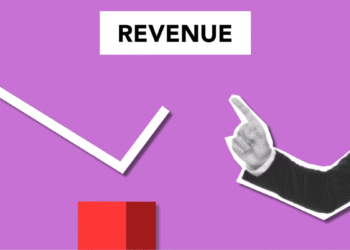I’ll never forget the first time I actually read one of my own customer testimonials and thought “Whoa. That sounds powerful.”
It wasn’t just a five-star review. It was this heartfelt story from a mom who used our planner to get her life back on track after a rough year. I cried. Like, legit cried. And then it hit me: testimonials aren’t about you — they’re about how someone felt because of you.
That’s when I really started digging into the why behind testimonials — not just collecting them for social proof, but understanding what makes them work on a deep, psychological level.
Why We Trust Strangers on the Internet (Weird, Right?)
Here’s the thing — as much as we say we’re skeptical, our brains are wired to trust stories. Especially stories from people who feel just like us. It’s called social proof, and it’s one of the six principles of persuasion from Dr. Robert Cialdini (look him up if you haven’t — he’s brilliant).
Basically, when we see someone else say, “Hey, this worked for me,” our brain goes, “Cool, then it’ll probably work for me too.”
Even if we don’t know the person.
Even if we’re not 100% sure the testimonial is real (which is why authenticity in testimonials matters — more on that in a sec).
I saw this firsthand when I ran a split test on a landing page. One version had generic bullet points about product features. The other? It opened with a customer quote — raw, emotional, no polish. The version with the testimonial converted 23% higher. That’s not small. That’s huge.
Emotional Triggers That Make Testimonials Work
So what makes a testimonial actually stick in someone’s head?
-
Relatability – If the customer sounds like you (same struggles, same goals), your guard drops. You trust them more.
-
Specificity – “This product changed my life” is too vague. But “After using this for 3 weeks, my skin was clearer, and I stopped hiding behind makeup” — that’s powerful.
-
Emotion – We buy on emotion, then justify with logic. Testimonials that share real feelings — fear, frustration, relief, excitement — hit way harder than ones that feel like Yelp reviews.
-
Transformation – The best ones take you on a journey. Before → After. Struggle → Solution. That arc mirrors our own internal decision-making process.
And if you’re wondering how this affects conversions, just know that the presence of compelling testimonials can significantly impact buying decisions. Customer reviews and conversions are way more connected than most people realize.
The Mistake I Made for Years
I used to only collect testimonials at checkout. “Hey, rate your experience!” That kind of thing.
But here’s the deal — that’s not when the real story comes out. People need time to use the product, feel the results, and reflect on how it helped. Now, I send a follow-up email about 2–3 weeks after purchase asking one simple question:
“What’s changed for you since using [product]?”
Game. Changer.
That open-ended question brought in testimonials that were honest, human, and sometimes flat-out emotional. Way better than “Rate this out of 5 stars.” If you want to encourage customers to leave thoughtful reviews, timing and tone are everything.
How to Use Testimonials Without Making Them Sound Fake?
Look, customers are smart. They can smell fake reviews a mile away. If your testimonials sound like they were written by ChatGPT on its coffee break, you’re doing it wrong.
Here’s what I do instead:
-
Use real names and photos (with permission, of course).
-
Let the voice be messy. Grammar errors? Emojis? All good. That’s what makes it real.
-
Highlight diverse stories. Show different types of customers getting value — not just one success story repeated over and over.
Also, don’t forget to display customer reviews effectively across multiple touchpoints — landing pages, product pages, emails, even in ads. A great testimonial can be a conversion magnet when placed where it matters most.
Final Thought: People Trust People, Not Brands
That’s the core of it, really. Customers want to know they’re not alone in their decision. Testimonials let them see themselves reflected in others — their fears, their hopes, their goals.
So don’t treat testimonials like marketing fluff. Treat them like stories. Because when someone sees themselves in that story, that’s when they click “Buy.” And if you really want to supercharge your efforts, look into how to use video testimonials for social proof in 2025 — because seeing someone say it out loud? That’s next-level trust.








